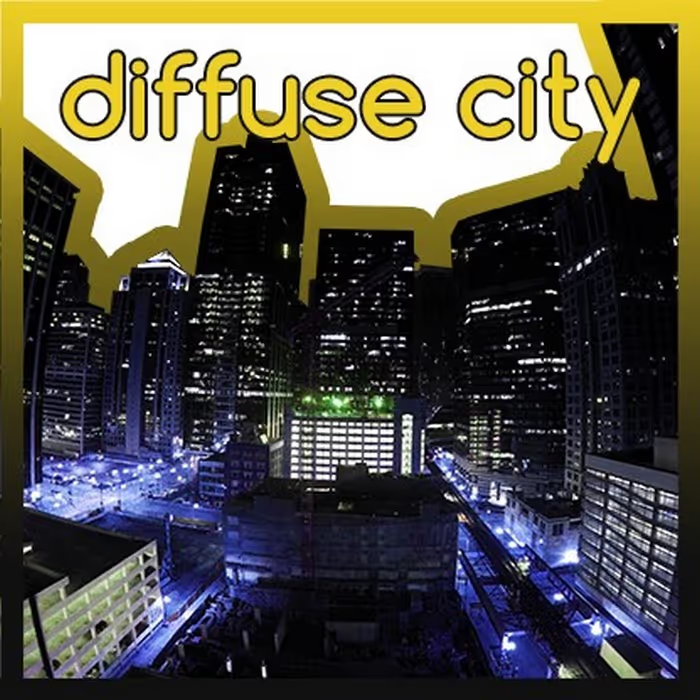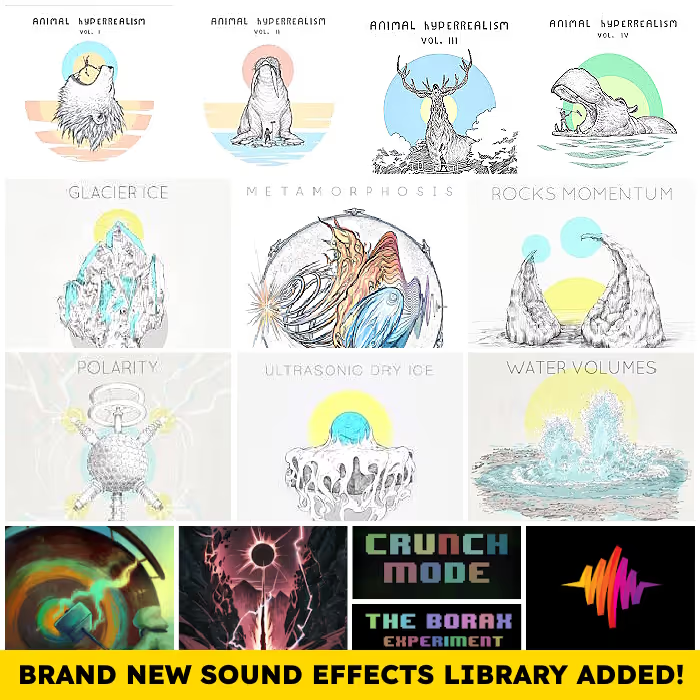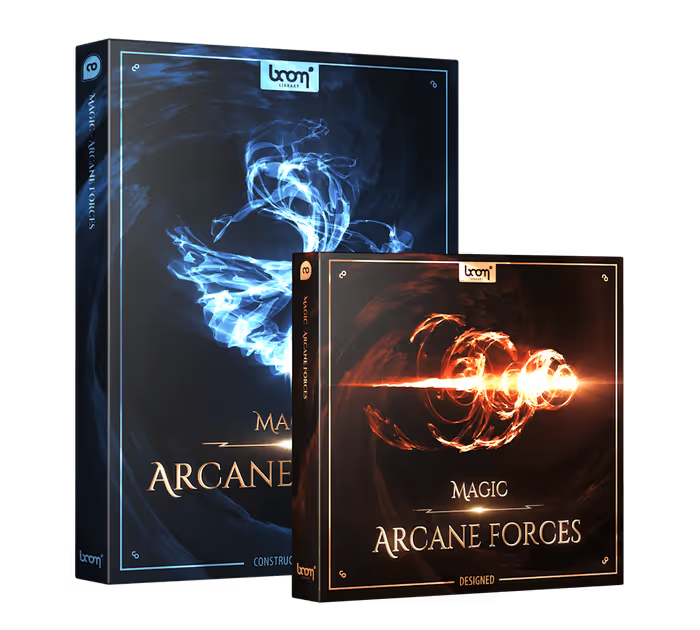At Sound Dogs Toronto, supervising sound editors Jill Purdy (whose won several Directors Guild of Canada Craft Awards for Sound Editing on feature films like Guillermo del Toro’s Nightmare Alley and The Shape of Water, Darren Aronofsky’s The Fountain, Paul W.S. Anderson’s Death Race and Pompeii, and more) and Alex Bullick (known for his work on The Expanse series, and whose also won DGC Craft awards while sound editing with Purdy on The Shape of Water, Pompeii, and more) teamed up with director Brandon Cronenberg to flesh out his horror film Infinity Pool for Sundance 2023’s Midnight category.
The Sundance film synopsis for Infinity Pool reads: “James (Alexander Skarsgård) and Em (Cleopatra Coleman) are enjoying a perfect vacation of pristine beaches, exceptional staff, and soaking up the sun. But guided by the seductive and mysterious Gabi (Mia Goth), they venture outside the resort grounds and find themselves in a culture filled with violence, hedonism, and untold horror. A tragic accident leaves them facing a zero-tolerance policy for crime: either you’ll be executed, or, if you’re rich enough to afford it, you can watch yourself die instead.”
The film is set on a fictional island, where the inhabitants speak a fictional language. Purdy talks about recording and editing the loop group performances in this language, and working that into the film’s crowds and backgrounds that Bullick designed, and using lines of off-camera dialogue to increase tension. Bullick talks about designing an array of backgrounds and sound montages – everything from serene resort backgrounds to mind-bending, abstract soundscapes for visually subjective moments – and how sound design and music worked together to heighten feelings of anxiety and terror.
INFINITY POOL – Official Trailer
What were director Brandon Cronenberg’s goals for sound on Infinity Pool? And what were your creative ideas on how sound could help to tell or support this story?
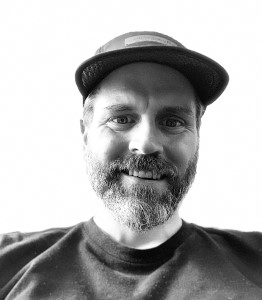
Alex Bullick (AB): Generally, Brandon wanted an atmospheric, naturalistic, somewhat minimalist approach. That is until he didn’t.
The film is a bit of a slow burn, lulling the audience into a sense of security, and then beyond into a sense of unease, until things catch fire and we’re in the thick of a wonderful thrill ride.
We tried to keep the sound as dynamic as the film itself. It takes place on a fictitious island, at a beautiful, serene vacation resort. The natural sounds of the surf, the wind, and the birds set the scene early on as we lay low, keeping a natural, real-world, ho-hum vacation vibe. We used some pretty aggressive-sounding tree crickets (that are apparently ever-present in Croatia, where much of the film was shot) on occasion as a reminder not to get too cozy. The idea was to get everyone comfortable with beautiful sounds to match the beautifully scenic locale, before we get loud and weird, which we inevitably did (on several occasions).
We were lucky enough to have early access to a lot of the fantastic score composed by Tim Hecker, which was so integral to setting the tone and giving the track its off-kilter unease. His stuff dips into sound design territory quite a bit, so it was great to have a reference as to where we should focus and when to get out of the way.
Jill Purdy (JP): Alex was responsible for the sound design, effects, and backgrounds, and I handled the dialogue and ADR. Just as with the effects and backgrounds, Brandon wanted the dialogue to sound natural as well. He wanted to keep as much production sound as possible (like most directors) and not deviate too much from that. He wanted to keep the performances the way they were, but we did have to dive into them to address noise issues in quite a few of the exterior scenes.

As far as creativity on the dialogue side, I was mixing and matching takes to get a bit more clarity that may have been lacking because of exterior noise or because of accents that several actors had in the film. My usual approach is to go in and look at every single take and enhance or swap out a syllable where it’s needed so the original performances are as intact as possible. Without dialogue clarity, the audience may not understand parts of the story and the film.
Another great thing about Brandon is that there were quite a lot of props and movement in all the scenes and he was open to keeping that there – the dialogue didn’t have to be split from those production effects (PFX). Alex would cut effects to enhance those sounds, or we’d balance them to work with the dialogue. If something got a little bit lost, it was more important to keep that performance with the natural movement of the props in the scene than replace them.
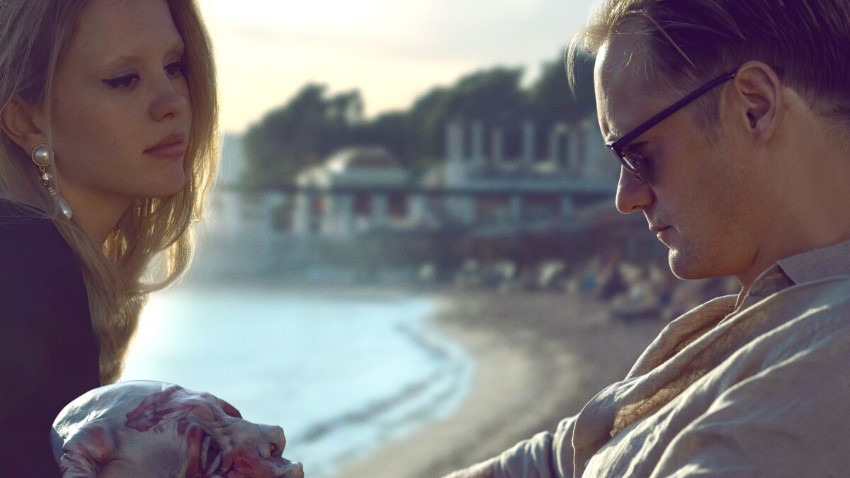
If you had to pick one scene that best represents your sound work on this film, what would that be? Can you describe the scene (in general terms) and what went into your sound work on it?
JP: For me, I’d have to say the exterior beach scene in reel one. In terms of variables that I had to deal with, this one incorporated all of them. We had clarity issues with accents. There were noise issues that varied from take to take. There were also many overlapping lines of dialogue in this movie that had to be dealt with without ADR. That was quite challenging but satisfying because it did end up working in the end.
…We were also balancing the loop group aspect of it with the crowds that Alex was designing.
Since this film is set on a fictitious island called Li Tolqa there was a fictitious Li Tolqan language that was made up for the film. When our loop group performers came in, they had to learn this made-up language, which was very intricate and intentional. Before recording that session, we had a linguist phonetically sound out and write down everything – with perfect intention in terms of what that language was supposed to be communicating. Even though we, as English speakers watching the film, won’t necessarily know what’s being said, the intention was there. The beach scene incorporated that language as well.
Getting the scene to work with all of these factors was quite challenging. We were also balancing the loop group aspect of it with the crowds that Alex was designing. Alex’s work was just brilliant; the sound design that he did was amazing. The balance between the loop group and the dialogue with Alex’s crowds and effects was very intricate. This beach scene is the best representation of what I had to deal with throughout the film.
AB: There are a few sequences that take this hallucinogenic, super-abstract, and visually-stimulating approach. These were definitely the most challenging for me (and likely for our wonderful mixers Matt Chan and Graham Rogers).
On my first pass, I threw everything I had creatively at it…
On my first pass, I threw everything I had creatively at it, hitting every visual event with a sound, trying to match the visual impact of it all sonically. When Brandon and I sat down for the first time to review my work, we both agreed I’d gone too far. Everything didn’t need to be accented to be impactful. So I dialed much of it back and was more discerning in the moments that I felt could be helped with my work.
Thankfully, as I mentioned before, we had access to early drafts of the score to work against. Tim’s work on these sections really led the way sonically and I did my best to complement his work where I could, and get out of the way when necessary. In the mix, Tim’s score (appropriately) won the day, but I’m still proud of how our side of things helped to make these sequences the incredible moments that they are.
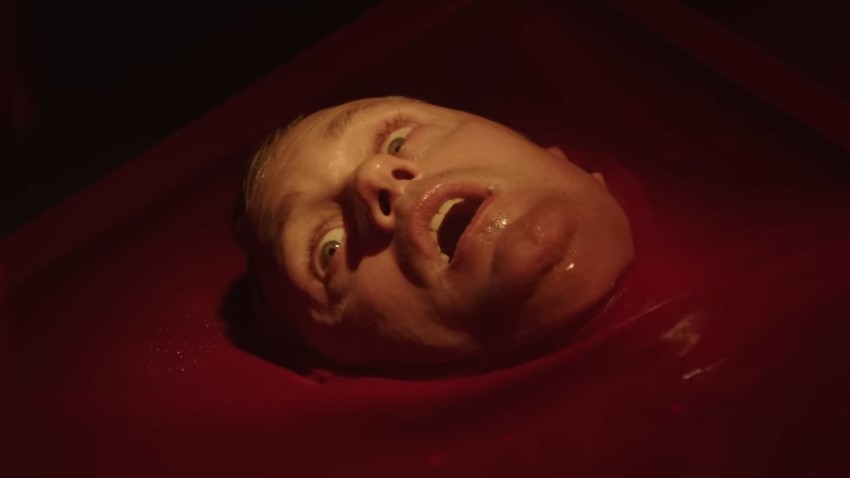
Indie films typically have restricted budgets and therefore don’t use a lot of CGI. But what the filmmakers lack in funds, they make up for in creativity. How were you able to use sound to help the filmmakers achieve a cool sci-fi/horror effect without having to put it all on-screen?
AB: I guess the best example of this would be the ‘Doubling’ sequence, where our main character gets cloned for reasons I won’t spoil.
Visually all we see is James getting prepped by some people in a hallway. He’s stripped and guided into a small, tiled room with a few feet of this red fluid on the floor. How the doubling process works is never explained (and isn’t all that important, really), but we knew we wanted something rooted in reality. It’s not magic, it’s some kind of technology. And since we never see it, it was up to us to describe it through sound.
And since we never see it, it was up to us to describe it through sound.
So through the walls we hear some pumps starting up, some plumbing action happening, machines building into this mechanical chugging that crescendos into black, at which point the process becomes pretty abstract and ambiguous, both visually and aurally. The aim was to keep it all grounded in reality somewhat, making the ethical and philosophical ideas of the film that much more severe I think.
JP: From a dialogue standpoint, I did a lot of work with breaths and efforts, and there were also some scenes with offscreen lines directed at the lead characters that would instill paranoia in those scenes. That helped to intensify the effect and hint at what was about to happen or not happen. So you felt the paranoia that was happening but those lines weren’t actually tied to anything you saw on screen. There were quite a few instances of that. And the breaths and efforts helped to raise the emotionality of things going on that you weren’t actually seeing.
[tweet_box]SUNDANCE 2023: Inside the Intense Sound of ‘Infinity Pool’ – with Jill Purdy and Alex Bullick[/tweet_box]
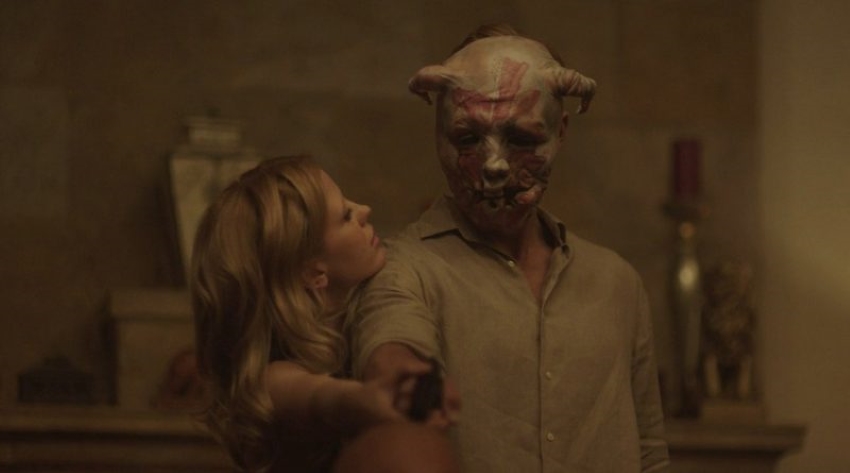
What was your favorite single sound that you created for this film? What went into it?
We ended up with these thrumming/low-end pistons with a surreal breathy element looping overtop, so it ends up sounding like a giant life-support machine.
AB: While not a single sound per se, I love where we ended up with the sound of the chamber where James meets his double for the first time. It’s a large room lined with Cold War Era-looking controls/machines that are inactive. Again, there’s not a lot of activity going on visually, and originally we just had some hums and drones to give it some sterility, but Brandon wanted a little more going on. We ended up with these thrumming/low-end pistons with a surreal breathy element looping overtop, so it ends up sounding like a giant life-support machine. It’s not featured too prominently in the mix and it’s not the star of the show, but I love the eerie feeling it gives the scene. I think it really helps the uncomfortable anticipation of it all.
JP: As far as a single sound goes, I’d say my favorite line of dialogue was, “Would you like a buffalo sausage?”
AB: Yeah, I remember that scene! You did a great job on that scene.

What have you learned while working on this film that has helped you to grow your craft – as a sound artist and sonic storyteller?
AB: I learned what I always learn on shows like this (that are super subjective and ambitious): don’t be precious. Don’t be precious with your work because a lot of great ideas end up not going into the film, and for good reason. It’s not about cool sounds as much as it is about making the film as good as it can be. I always keep learning that.
JP: I’m always learning because there’s so much ever-evolving technology available and I like to play around with that. My ultimate goal is to keep the performances that were recorded during production so I’m going to use anything that’s going to make that happen in as organic a way as possible. I don’t like to manipulate the sound so much that it doesn’t sound natural, and it’s amazing what technology has done. I record very little ADR these days and I’m happy about that because it saves the actor or director from some grief because the nuances you get in a real performance on the day can’t always be matched. There is the odd time when that can be superseded, but my preference is to keep the original always. And technology has allowed us to do that in many cases.
It’s important to get to know the director and know what they are looking for and what their limits are…
Every time I work with a different director (or work with the same director again), it’s a matter of having the conversation upfront about what their goals are. From a technical standpoint, what I think might be amazing might not always be the way to go because some directors like the grittiness or clicking of an actor’s voice. They feel that if you de-click the dialogue (take out mouth clicks, for instance), the original performance may be compromised. It’s important to get to know the director and know what they are looking for and what their limits are for that sort of thing, and then move forward from there.
Every situation is different, from my perspective, and it’s great to have a reminder of that. Working with Brandon was unique and it was really stimulating. It was a reminder that every experience is different. I’m excited every time I start a film because I don’t know what’s going to happen – how it’s going to start or end up or where it’s going to go along the way. I’m stoked to see what the reaction is going to be to this movie at Sundance and beyond!
A big thanks to Jill Purdy and Alex Bullick for giving us a behind-the-scenes look at the sound of Infinity Pool and to Jennifer Walden for the interview!


